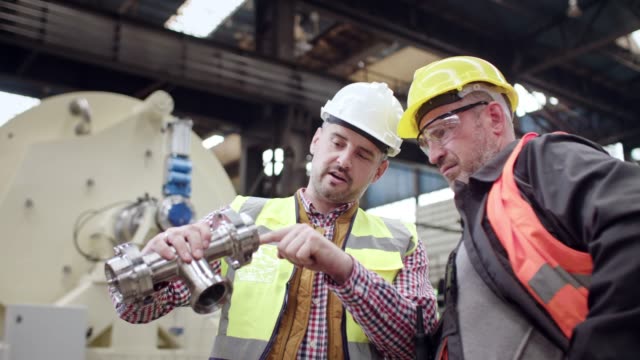Explore the latest trends and advancements in quality inspection for manufacturing, ensuring reliable and efficient production processes. In today’s rapidly evolving manufacturing landscape, quality inspection plays a crucial role in ensuring the production of reliable and high-quality products. As technology continues to advance, new trends and innovative advancements are reshaping the way quality inspection is carried out. In this blog, we will explore these emerging trends and advancements that are revolutionizing the future of quality inspection in manufacturing.
Automation in Quality Inspection
Automation has become a game-changer in quality inspection, streamlining processes and enhancing efficiency. With automated inspection systems, manufacturers can:
1. Improve accuracy:
Automated inspection systems utilize advanced algorithms and machine learning to detect even the slightest defects, ensuring high accuracy.
2. Increase speed:
Automated systems can inspect products at a much faster rate than manual inspection, resulting in improved productivity.
3. Reduce human error:
By minimizing human involvement, automated inspection systems reduce the chances of errors caused by fatigue or oversight.
4. Enhance consistency:
Automated systems perform inspections with consistent standards, ensuring uniform quality across all products.
5. Real-time data analysis:
Automated inspection systems provide real-time data analysis, allowing manufacturers to make immediate adjustments if any quality issues are detected.
6. Cost savings:
With reduced labor costs and improved efficiency, automated inspection systems help manufacturers save money in the long run.
7. Traceability:
Automated systems can track and record inspection data, providing a comprehensive audit trail for quality assurance purposes.
8. Predictive maintenance:
By monitoring equipment performance, automated inspection systems can predict maintenance needs, reduce downtime, and optimize production.
Artificial Intelligence (AI) in Quality Inspection
The integration of artificial intelligence in quality inspection has revolutionized the industry, enabling manufacturers to:
1. Detect complex defects:
AI-powered inspection systems can identify intricate defects that might be challenging for human inspectors to spot.
2. Adaptive learning:
AI algorithms can learn from previous inspection results and continuously improve their accuracy over time.
3. Defect classification:
AI can categorize defects based on severity, allowing manufacturers to prioritize their corrective actions.
4. Object recognition:
AI-powered systems can recognize different types of products, ensuring accurate inspection even in diverse manufacturing settings.
5. Anomaly detection:
AI algorithms can identify anomalies in production processes, alerting manufacturers to potential quality issues.
6. Predictive analytics:
By analyzing historical data, AI systems can predict potential defects and prevent them from occurring in the future.
7. Quality control optimization:
AI can optimize quality control processes by identifying areas for improvement and suggesting corrective actions.
8. Remote monitoring:
AI-powered inspection systems can be remotely accessed, enabling manufacturers to monitor quality in real-time, even from a distance.
Internet of Things (IoT) in Quality Inspection
The incorporation of IoT in quality inspection has revolutionized the way manufacturers monitor and maintain product quality. With IoT-enabled inspection systems, manufacturers can:
1. Connect and synchronize devices:
IoT allows inspection devices to connect and communicate with each other, ensuring seamless data sharing and analysis.
2. Remote monitoring and control:
IoT enables manufacturers to monitor quality inspection processes remotely, ensuring timely interventions if any issues arise.
3. Predictive maintenance:
IoT devices can monitor equipment performance and detect potential maintenance needs, preventing unexpected breakdowns.
4. Real-time data analytics:
IoT-powered inspection systems provide real-time data analysis, enabling manufacturers to make immediate decisions based on accurate information.
5. Enhanced traceability:
IoT devices can track and record inspection data throughout the production process, ensuring complete traceability and accountability.
6. Supply chain integration:
IoT can facilitate integration with suppliers and customers, allowing for real-time quality insights across the entire supply chain.
7. Improved productivity:
IoT-enabled inspection systems optimize processes and minimize downtime, resulting in improved productivity and reduced costs.
8. Eco-friendly practices:
IoT devices can monitor energy consumption and identify opportunities for energy-saving, promoting sustainable manufacturing practices.
Grab the Future of Quality Inspection Today!
The future of quality inspection in manufacturing is filled with unprecedented advancements and innovative technologies. Automation, artificial intelligence, and the Internet of Things are transforming the way inspections are carried out, ensuring higher accuracy, efficiency, and productivity. As manufacturers embrace these emerging trends, they can look forward to enhanced quality control, streamlined processes, and ultimately, the production of reliable and high-quality products that meet and exceed customer expectations. The future of quality inspection in manufacturing is indeed promising, and by staying at the forefront of these advancements, manufacturers can secure a competitive edge in the industry. Stay informed, embrace innovation, and ensure a seamless production process for a successful future in manufacturing.

